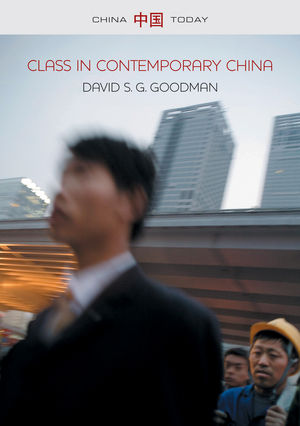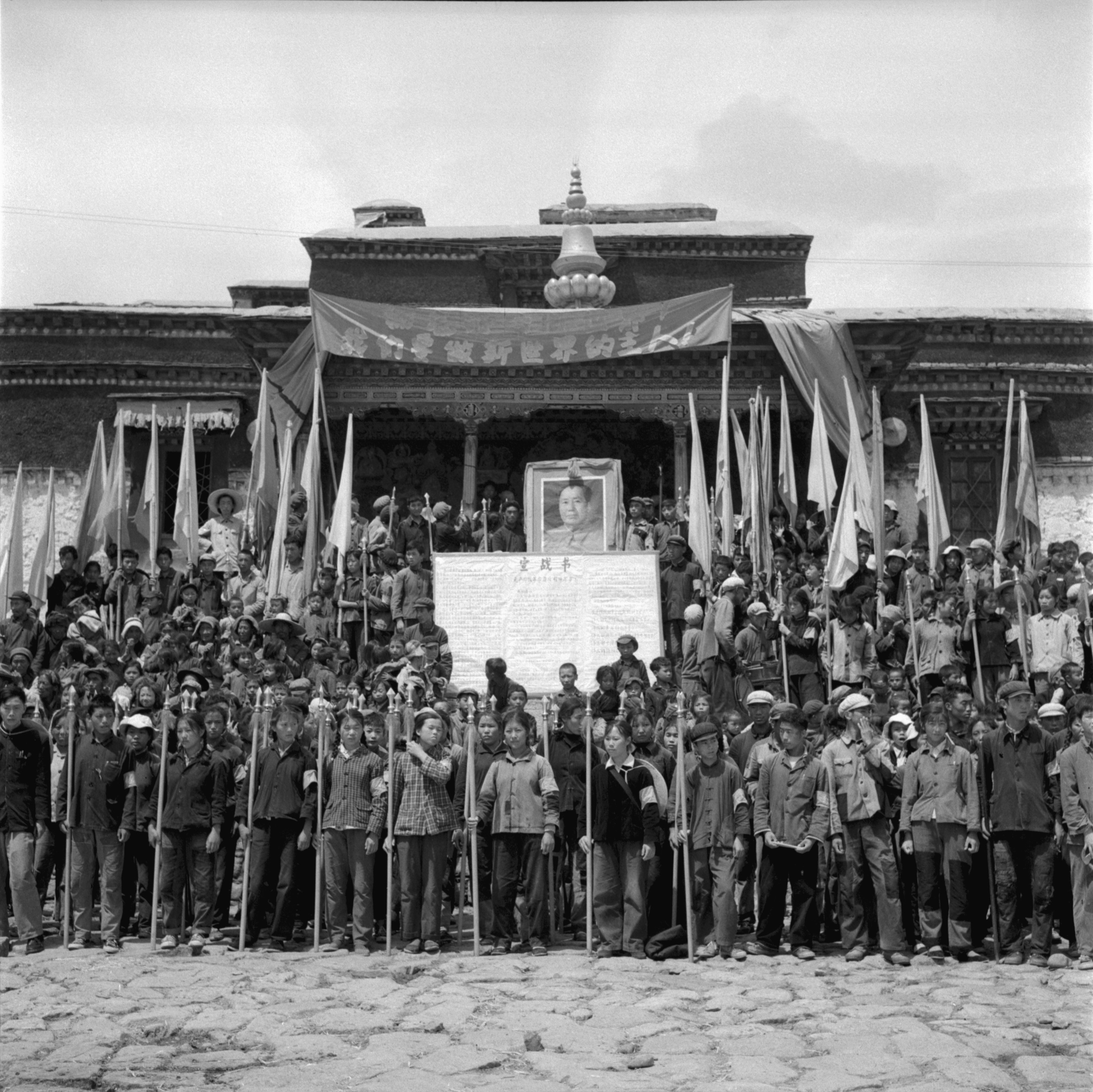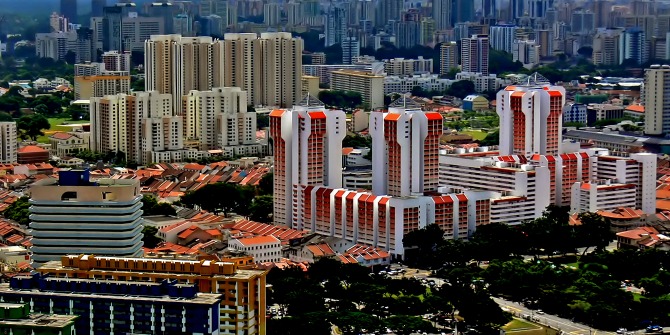This book is ideal for students and scholars who would like to get an updated look at developments in contemporary China, finds Chia Wei-Yan Aloysius. Chapters cover inequality, political elites, and peasant activism.
 Class in Contemporary China. David G. Goodman. Polity Press. 2014.
Class in Contemporary China. David G. Goodman. Polity Press. 2014.
Ever since China’s reform in 1978, with the opening up of its economy to market forces and the liberalization of many of its industries, there has been phenomenal growth and a remarkable transformation of its economy. Consistently breaching 10% throughout the 1990s and averaging 9.8% ever since its opening up to the forces of the marketplace, its growth rates have been those of admiration for large developing countries trying to lift their citizens out of poverty. But how effectively has this growth rate been translated into the actual wellbeing and improvement of life for China’s large population, and how has the structure of class changed? These and other questions about China’s political economy David Goodman explicates in his thoroughly researched book, Class in Contemporary China.
There are great challenges to defining China’s economic model, given that it is still essentially a communist state that takes its leanings from a Marxist-Leninist ideology that still has a fundamental influence. With the liberalization of many aspects of its economy to market forces has come the problem of defining the profound changes that have transformed the livelihoods of its people. High growth rates have led to disparate differences in life chances, opportunities, and starting points to varying degrees. For instance, the household registration number that every Chinese citizen is assigned, determining if one is from rural countryside or an urban area, or the historical relations one’s family has to the party-state, has great relevance in shaping one’s economic and social position in society. As Goodman states very frankly in his chapter ‘Stratification Under Reform’, many of these disparate differences are due to the peculiarities of China’s economy and how it has evolved in relation to politics, where certain pre-reform definitions of social occupation have lasting effects that shape one’s access to the goods that lead to a middle class life.
In this aspect, one would expect a rising tide of the middle classes that, given the size of China’s population in relation to its growth, would be considerable. In fact, a number of surprising findings are revealed. By comparing various studies and pointing to some of the discrepancies between them, Goodman argues that China’s middle class is not as large as it seems. Comparing official statistics and those measured by scholars tells a story of a middle class that is large only because there are no clear and specific delineations of where middle class becomes upper class and why. These and other findings adopted from other surveys and the attempt to synthesize them is extremely interesting and insightful, for it gives a critical picture of what middle class means in such a huge country, where a city in the Eastern coast like Tianjin cannot be compared to one like Zhengzhou in a Central provinces. The methodological issues in measurement are given extensive treatment in this book, and Goodman also highlights the limited extent to which economic growth can actually propel the masses upward. In his excellent analysis comes a sobering message of what growth can and cannot do.
What about the multitudes who are scrambling to move up the economic ladder? Analysis in the chapter ‘Subordinate Class’ is telling. An underlying tension sears between those who live in urban areas and those who journey to the cities to find work from the countryside. The millions of migrants who work at the factories that produce the goods of the world, who are shunned and stigmatized by urban dwellers, do not hold the same rights and access to healthcare and education as those with a household registration in the urban area. By some strange quirk this is because of the land that rural migrants can fall back to, but it is not really clear why this is the case. Likewise, the many public sector workers who have been laid off as a result of massive restructuring in the economy, previously had the certainty of their jobs in State-owned Enterprises but now need support. These are the workers who have powered China’s economic growth in the last three decades, that have led to an increased standard of living especially for those who live and work in the city. But it seems that for many of them social support, labour rights and recourse to justice are all still woefully inadequate.
One might expect this lack of social support system and a similarity in position to galvanize the subordinate classes to come together for change. Many in the west, for instance, have thought that a rising middle class – better educated and with more awareness of their rights – would push for more political freedoms. In a confluence of interests, pressures will emerge for the party to move towards a more democratic system, as both subordinate and middle classes pressure and demand. According to Goodman in his chapter on the ‘Political Economy of Change’, nothing could be further from the truth. Though it is true that there are grievances by the subordinate classes, those are directed mainly to specific entities, such as the enterprises that these workers used to work for. And differences between public workers and migrant workers prevent such movements from happening.
Perhaps the most fascinating survey and analysis is how the middle class might not actually want radical change. Though the middle class would press for reforms, as is already the case, they are not keen on dramatic changes to the system, Goodman argues. The political ties to the party between many who are in the middle class, and the fact that it was involvement in the party that led to many becoming middle class in the first place, points to the close knit, intricate, and complex web of relations between the public and private. The fact that many middle class public workers and private entrepreneurs are also cadres highlights a unique feature in Chinese society in general. Whilst in the west the public and private are clearly separated, in Chinese society it is more fluid and ambiguous. This in return, in a rather realist reading of such relations by Goodman, would prevent a movement towards large systemic changes to the political system.
Class in Contemporary China has done a noble job in what is an extremely complicated and diffused subject. Goodman has managed to piece together a survey of disparate understandings of class and bring them into a coherent portrait, taking the studies and analysing them in detail. It is an absorbing look, given the tremendous change in China that is also changing the world. All told, a lot needs to be done to obtain an accurate picture of China, and no single volume can do justice to what is a huge country with many local variations. But as an overview, Goodman has done a very good job.
Overall, this book is ideal for students and scholars who would like to get an updated look at developments in contemporary china.
Chia Wei-Yan Aloysius is currently pursuing a Master’s degree in Sociology at LSE. His interests are in economic sociology and Markets on a transnational scale. He is particularly interested in the evolution of the markets over time, and how the nature of interactions and economic relations in society has been transformed by technology, and what the implications are for society








1 Comments